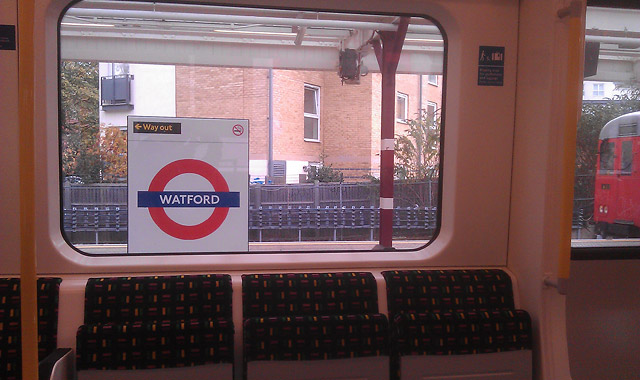
As headlines again focus on the Government’s proposals for high-speed rail link connecting London with major cities across England, and the push towards a greater use of public transport continues, I have experienced a weekend of rail disruption which illustrates exactly why many people simply don’t have enough confidence in trains to get them to places they need to be.
Thanks to Virgin’s Pendolino trains, the journey time when travelling from Liverpool Lime Street to London has been reduced to slightly over two hours. That’s short enough to be able to have yourself a weekend lie in, yet still be in the capital in time for lunch.
Any such timescale started to look under threat however, when the 10.48 service grounded to a halt at Nuneaton – a station not amongst those which we were scheduled to stop at.
An announcement informed passengers that problems with overhead power lines in the Wembley area was causing severe delays into London, and we would be stopped until it was possible to proceed onwards to Rugby, which was also not originally a planned stop.
A slow journey to Rugby went on to become a non-journey to anywhere. The service to London was suddenly terminated, and the train was heading back to Liverpool.
The Virgin train manager made no attempt to disguise the fact that she had no idea how long we’d have to wait at Rugby, or indeed if there would even be a service able to take passengers any further. Luckily there was already a train a few platforms away which was due to continue towards London, but the only guarantee available was that it would make it as far as Milton Keynes. Beyond that, there were no promises.
Overcrowded and full of frustrated passengers originating from a host of destinations, the train did make it to Milton Keynes, where after once again coming to halt, our new train manager provided passengers with three choices, none of which were particularly inviting for those of us keen to actually see London.
1. Get off the train and wait for a train travelling to London, which may or may not end up getting there
2. Go back home
3. Wait on the current train and hope that at some stage it would start moving again – though it was stressed how unlikely that would be, in the short-term at least.
As at Rugby, luck had it that on Platform 4, there was another train waiting to depart for Watford Junction. From there, we were told, overground services would finally get us all to London.
The first part of that came true, though just as one overground train was set to leave (with all other southbound trains already having been cancelled), a station announcement informed the hordes that due to an emergency evacuation of a Virgin train further down the line, there would be nothing leaving for London any time soon.
The only remaining option was to get across Watford to the Metropolitan line underground station, a trek best done by foot after witnessing the length of the taxi queue. Half an hour’s walk later and onto the fifth and penultimate train to our docklands destination.
Once on the underground, the problems ended but not before a 2.5 hour journey had become a 7 hour journey involving five changes of trains and lengthy waits on four chaotic platforms crammed full of unhappy passengers.
At least things would be sorted in time for the return journey, or so I thought.
Back at Euston on Monday evening, the sight of a crowded concourse greeted us, everyone staring up at the departures board. No matter where each person was due to travel to, everyone had something in common: their train was not going anywhere.
The status of each and every train listed on the board was either “Departure delayed” or “Cancelled”. An issue with overhead wires was again cited as the cause, though this time occurred the Northampton, Milton Keynes and Rugby regions.
For a period, most services were delayed by up to an hour, if not cancelled altogether. Passengers to certain destinations were urged to get alternative trains heading in the same general direction – such as “north” – and change to a more relevant service further along their journey.
The disruption caused on both days was simply put down to damaged overhead cables though the cause of the damage remains a mystery, to the travelling public at least.
With massively increased congestion expected on London’s roads during next year’s Olympics, we can surely expect that ministers will continue to promote the use of public transport as a better alternative to driving.
But until stories such as those above become a thing of the past, all appeals to rely on public transport will fall on many a deaf ear.
Because when you most need to be somewhere, putting your faith in public transport is still a very risky business indeed.